Table of contents
The chanterelle is also called the egg sponge or chanterelle. This forest mushroom has a very typical aroma. However, we advise against eating it in large quantities (gout).
Use in the kitchen:
With its slightly peppery taste, chanterelles are very popular in the kitchen for many dishes. It is important to clean them well before use. However, chanterelles should not be cleaned under running water as they absorb too much liquid. The best way to clean them is to use a damp cloth and remove any soil or forest residue between the lamellae with a kitchen brush.
You can then fry or sauté the venison. Chanterelles taste great as an ingredient in soups (eg chanterelle soup), as a ragout, in a sauce or terrine, but also fried plain as a side dish. Lightly sautéed, chanterelles give salads a pleasant mushroomy, fruity aroma. Chanterelles are also used in risotto or mixed with pasta. Please note: Chanterelles are not suitable for raw consumption. More on this in the "Danger - Intolerances" chapter below.
Vegan recipe for chanterelle risotto:
Ingredients: 700 g chanterelles, 750 ml hot vegetable stock, 2 onions, 1 clove of garlic, a little oil (e.g. rapeseed oil), 2 bay leaves, 1/2 teaspoon powder from dried porcini mushrooms, 400 g short grain rice, 130 ml white wine, salt,black pepper, 1/2 bunch of parsley.
Preparation: Just brush the chanterelles, don't wash them. If they are very dirty, you can rinse them briefly and then pat them dry. Cut the mushrooms into bite-sized pieces, peel the onions and garlic and chop finely. Heat the oil in a large pan and sauté the onions and garlic until translucent, then add the bay leaf and porcini powder and mix everything well. Add the rice, sauté briefly and deglaze with white wine. Now add around 250 ml of hot vegetable stock and simmer, stirring constantly. Keep adding a little vegetable stock until the rice is al dente. Meanwhile, fry the mushrooms briefly in a pan in a little oil until the water has evaporated and season with salt and pepper. As soon as the risotto is ready, arrange on plates, spread the mushrooms on top and garnish with chopped parsley.
| Not only vegans or vegetarians should read this: Vegans often eat unhealthily. Avoidable nutritional errors. |
Shopping - where to buy?
Chanterelles are available in season in almost all supermarkets such as Coop, Migros, Denner, Volg, Spar, Aldi, Lidl, Rewe, Edeka, Hofer etc. and of course also in regional markets. The goods in the supermarket mostly come from East Central European, Baltic and Eastern European countries. Only buy or collect light, plump-looking chanterelles. Dark spots indicate that the chanterelles have already dried out and have largely lost their taste. If you smell them, you can tell that they are fresh if they have a fruity, mushroomy aroma. A mushroom identification book compares the smell (not taste) with that of dried apricots. 6
Found in the wild - Season:
The chanterelle is a forest mushroom and can therefore only be found in the wild. It can be recognized by its shape and the color of its eggs. In some countries, the collection of chanterelles is limited due to the decline in numbers, for example in Austria to 2 kg per person. 1 In Germany, the chanterelle is protected, and collecting for personal use is permitted. 8
The chanterelle season depends heavily on the weather and the region. They literally "shoot" out of the forest floor, especially in hot, humid weather and after rainy days. They are usually found from June to November.
Storage:
Chanterelles do not have a long shelf life. They like to be kept cool and dry. If possible, do not use plastic bags for storage. Fresh mushrooms are best used immediately. Chanterelles can also be frozen after cleaning and blanching. If you freeze them raw, they will taste a little bitter after thawing.
Drying is also a way to increase the shelf life. However, this causes the chanterelles to lose a lot of their good aroma. You can dry the chanterelles in the air by threading them. Once they have been cleaned and chopped up a little, you can dry them for several hours at 50 °C in the oven or in a dehydrator. Before using dried chanterelles, soak them briefly in hot water. Dried mushrooms can also be finely ground: this can be used to make tasty soups or sauces.
Ingredients - nutritional value - calories:
Fresh chanterelles are very low in calories at 38 kcal/100g, as they consist of around 90% water. Although the high water content reduces the amount of vitamins and minerals, their composition is of high quality.
Chanterelles contain vitamins such as vitamin D, niacin, pantothenic acid (vitamin B5) and riboflavin (vitamin B2). The high vitamin D content of 5.3 µg/100g is particularly striking, as this is said to cover over 100% of the daily requirement. Morels (5.1 µg/100g) and dried shiitake (3.9 µg/100g) also contain a lot of it. 2 The vitamin D content can be increased by placing the mushrooms in the sun. The vitamin D2 contained in mushrooms does not last as long in the blood as vitamin D3, but it still helps to raise the vitamin D level. 7
Among the minerals, potassium and iron are present in significant quantities alongside copper. Since we usually get enough copper from our diet, we will not go into the values here in detail (0.35 mg/100g). Chanterelles contain a good portion of the daily potassium requirement (506 mg/100g). As an essential macronutrient, potassium is used to regulate the membrane potential in the body's cells. Amaranth has comparable values. Dried herbs, such as parsley, have many times this amount, with 2,683 mg. 2 However, it should be remembered that potassium is lost during the cooking process.
The trace element iron is very important for the transport of oxygen in the blood. Chanterelles contain 3.5 g/100g, similar to peeled barley or Jerusalem artichokes. Here too, the dried herbs are far above this content: for example, basil has around 90 mg of iron per 100 g.
Health aspects - effects:
The proteins in chanterelles have a valuable amino acid composition. Our body produces vitamin A from the beta-carotene present. This has a positive effect on skin and hair.
Dangers - intolerances - side effects:
Raw chanterelles contain a lot of chitin. This carbohydrate is very difficult for us to digest and therefore chanterelles are not suitable for eating raw. Even when cooked, the chitin is still present, but significantly reduced. Chanterelles also contain high concentrations of purine. Gout sufferers should be aware of this and avoid chanterelles. Foods with a high purine content are also not recommended for children.
To avoid the danger of the deadly fox tapeworm, chanterelles must always be cleaned thoroughly before consumption. The worm's eggs are destroyed by heating.
Wild mushrooms can contain toxic heavy metals. They extract cadmium, lead or mercury from the soil, which our bodies store in tissue when they are consumed. There is also the possibility that wild mushrooms are radioactively contaminated. The WHO recommends limiting weekly consumption to less than 250 g of wild mushrooms. Pregnant women, nursing mothers and small children are advised not to eat wild mushrooms. 3
Mushrooms and gout:
Many people believe that mushrooms of any kind are good for gout. This is because certain mushrooms actually have a positive effect. Hence the warning at the top. Because of the high purine content, people with gout or who are at risk of developing gout should avoid chanterelles. Alcohol and an unhealthy diet also promote gout, especially beer and red wine.
A certain mycotherapy is effective against gout, i.e. eating certain mushrooms such as shiitake mushrooms, cordyceps and reishi. Shiitake mushrooms are said to have an even better healing effect, especially when combined with natural sources of vitamin C.
Occurrence - Origin:
Chanterelles were used as food even in ancient times. Since chanterelles cannot be cultivated, they are only found in the forest. Their place of origin is largely unknown. In addition to Europe, the common chanterelle is also found in Australia, North and South America and in northern Asia. As a mycorrhizal fungus, the chanterelle prefers symbioses with spruce and copper beech trees. Chanterelles also live under oak, pine and fir trees. 4.6
Danger of confusion:
When picking mushrooms, you should generally be very knowledgeable. The chanterelle has a yolk- to golden-yellow cap with a diameter of 2-10 cm. It is very easy to confuse it with the false chanterelle ( Hygrophoropsis aurantiaca). The false chanterelle is actually non-poisonous, but does not have the typical peppery aroma. After eating large quantities, mild gastrointestinal complaints occur.
The dark olive tree funnel ( Omphalotus olearius) also poses a risk of confusion. This dark yellow basidiomycete always grows on wood, preferably on olive trees. The chanterelle grows exclusively on the ground. In Europe, the dark olive tree funnel is mainly found in the Mediterranean region. Its gills and fungal network glow in the dark (bioluminescence). This is why it is often called the glowing olive tree mushroom. The mushroom is not fatal, but it often causes severe discomfort and, in the worst case, liver damage after eating. The poisonous flesh is tough and fibrous. 5,6
General information:
The chanterelle ( Cantharellus cibarius) belongs to the chanterelle family (Cantharellaceae).
The expression "not giving a damn about something" (or "not giving a damn about something") means something like "not giving a damn about something" (or "considering something to be completely unimportant"); "not giving a damn about something" means "being worthless". In contrast to today, this mushroom was so widespread in the Middle Ages that it was not worth offering it on the market. It was therefore considered worthless. 9
Alternative names:
In the respective countries, the chanterelle is also called: Eierschwammchen (Austria), Eierschwammerl and Reherl (Bavaria) , in Switzerland it is called Eierschwamm or Eierschwämmli . In English it is known by its Latin name ( Cantharellus cibarius) or it is classified under the golden chanterelle.
Literature - Sources:
Bibliography - 8 Sources (Link to the evidence)
| 1. | Rechtsinformationssystem des Bundes Österreich. Verordnung der Salzburger Landesregierung. Pilzschutzverordnung. 47;1994. |
| 2. | USDA United States Department of Agriculture. |
| 3. | Apotheken-umschau.de Pfifferlinge: Vielseitig und lecker. |
| 5. | Heilstrategie.de Pilzvergiftung durch Verwechslung. |
| 6. | Laessoe T. Pilze - Das grosse Bestimmungsbuch. DK. 2014. |
| 7. | Holick MF. Vitamin D Deficiency. The New England Journal of Medicine. 2007;357. |
| 8. | Bundesministerium der Justiz und für Verbraucherschutz. Verordnung zum Schutz wild lebender Tier- und Pflanzenarten. BGBl. 1 2005. |
| 9. | Wagner G. Schwein gehabt! Redewendungen des Mittelalters. Regionalia Verlag. Polen: 2015. |

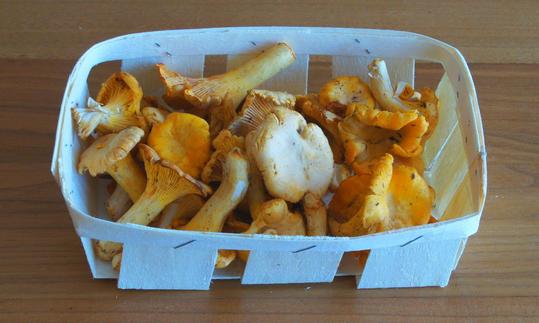

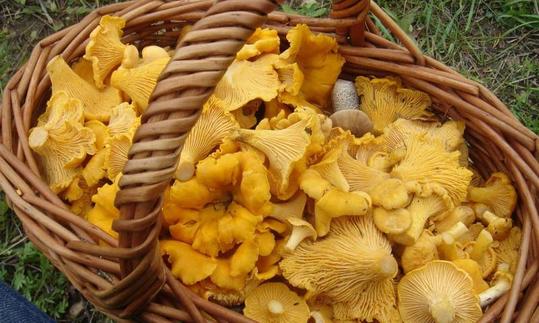

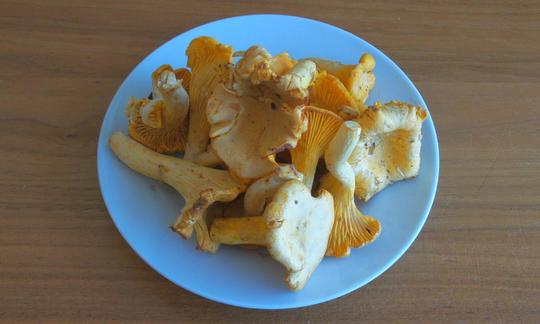

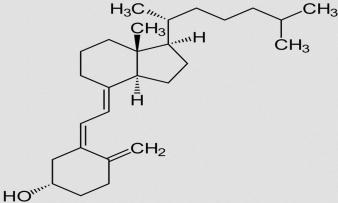

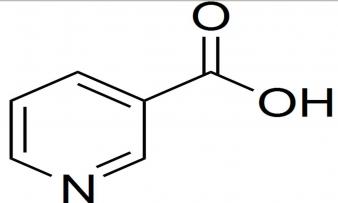


Comments